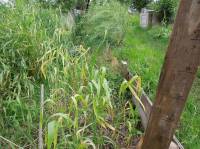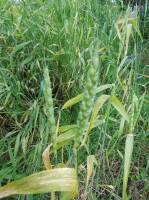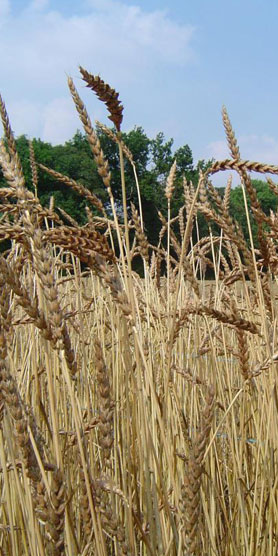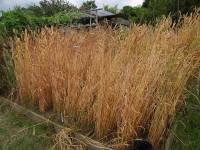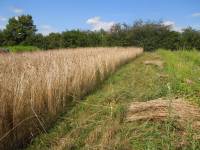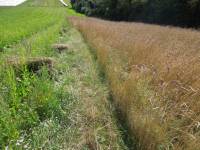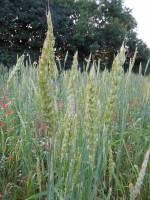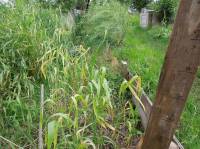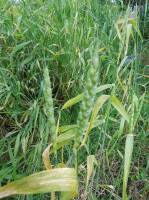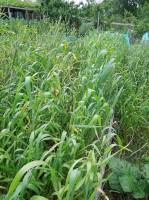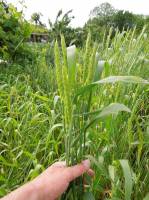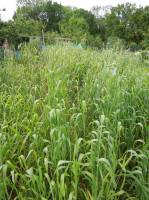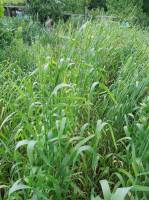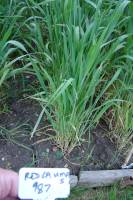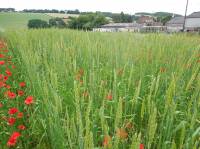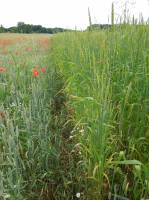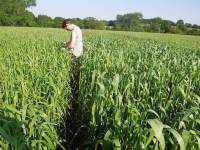 BBA wheat portal
BBA wheat portal
Lammasorigin:United Kingdom first record:1650 references >>> ID images >>>includes wheats >>> Red Lammas >>> White Lammas >>> Yellow Lammas |
Red Lammas is certainly the most prominent English millable landrace wheat prior to the 19th century recorded by the first modern botanist, John Ray in 1650 in his Catalogus plantarum circa Cantabrigiam nascentium and highly praised as the "king of wheats" by Ellis in 1753.
The group also includes "White Lammas" which again is mentioned by John Ray and Ellis and "Yellow Lammas" mentioned by Ellis but these seem to have petered out of English cultivation earlier than Red Lammas. However White Lammas became the first popular wheat to be grown by settlers in Australia and Yellow Lammas it seems was transferred to Southern Carolina in the USA and went on to become popular as "Red May" and "Michigan Amber". White Lammas also entered the USA from Australia to become "Pacific Bluestem" (and under various other names). These lines in turn went into later USA wheat breeding so that the Lammas remains an important constituent in the pedigree of modern wheats.
It seems reasonable to assume that these three lines named after their grain colour were all once part of a single landrace type separated out by farmers. The common element in the group is a relatively long lax slightly tapering ear with smooth glume and beardless except a few trace short awns at top occasionally. Plant is at the high end of typical heritage wheat height with a strong slightly tapering straw only slightly bending towards top when mature. In the case of "Red Lammas" straw and ear can be more or less red on ripening though this colouring is soluble and so can disappear in wet summers.
The origin of the name "Lammas wheat" it is commonly assumed refers to the "Lammas" festival which nowadays is August 1st with the implication that Lammas wheat should be ready for harvest by then but this is certainly not true in most seasons. There is some question whether August 1st is the ancient timing of "Lammas day" which may explain the discrepancy
Reference #1
Catalogus plantarum circa Cantabrigiam nascentium by John Ray, 1660 LINKReference #2
The Modern Husbandman, Oct - Dec by William Ellis, 1744 LINK"Red Lammas As Wheat is the King of Grain so this Sort has been deemed hitherto The King of Wheats for having deservedly been under the Reputation of producing the whitest and finest of Flour as is well known in particular to the Londoners"
Other reference
The agriculturist’s manual, forming a report of Lawson’s agricultural museum in Edinburgh by Peter Lawson, 1836 LINK
"Lammas or Red English Wheat
Froment ble Lammas ou Ble rouge Anglais Fr
Originally from England to the north of France where it has been cultivated with a considerable degree of success but although taken from a northern to a southern latitude it is found less adapted for withstanding the winter in the neighbourhood of Paris than the common red wheat No 19. This can only be accounted for by the winter in that part of France being generally colder than in England Form of the ears more waved than in those of the last mentioned sort also thinner and not so much reclined or bent to the side Spikelets bright red towards the extremity lighter and more of a copper colour towards their insertion into the rachis.
The French consider this sort as yielding the finest sample of any of their red wheats It is however liable to be shaken when fully ripe and should therefore be cut a day or two before arriving at full maturity In the quality of its sample this variety very much resembles that of the Red Kent to which it also bears a marked resemblance in its general character so that they are very probably of the same origin and owe any distinction more to the effects of a difference in climate soil or culture than to any thing else."
Red Lammas TR24440 link
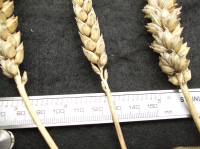
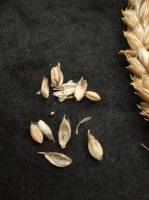
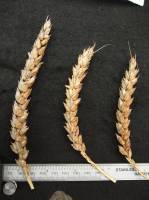
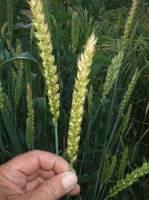
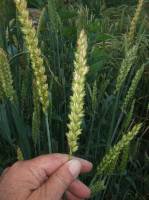
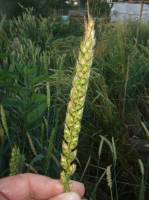
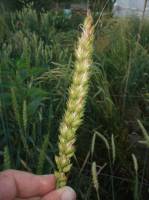
Lammas CGN05550 link
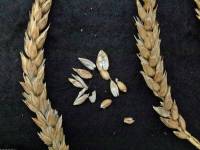
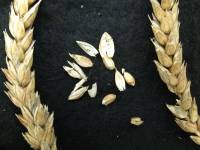
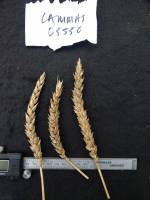
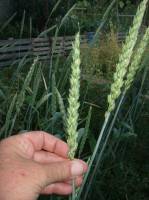
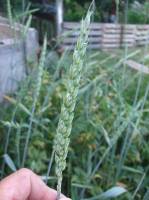
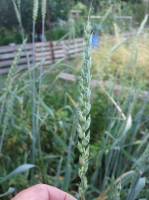
Lammas Red CGN04381 link
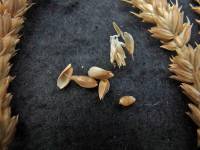
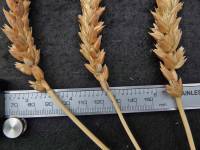
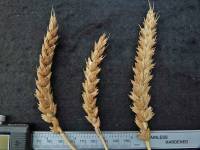
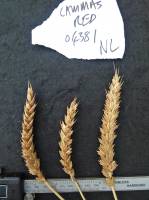
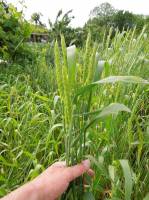
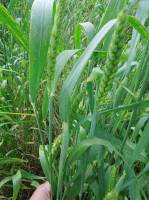
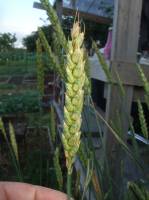
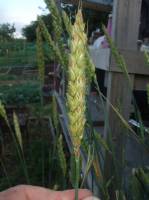
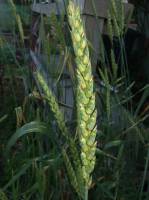
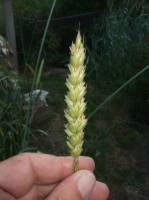
Red Lammas UK 987 link
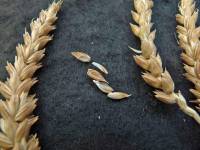
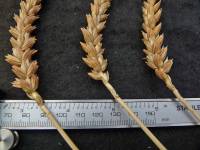
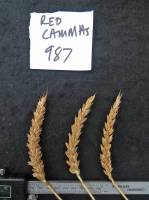
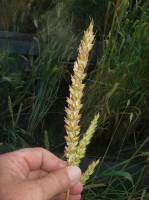
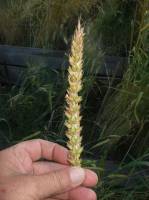
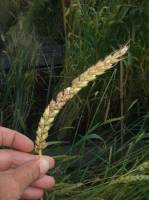
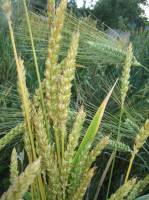
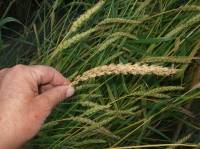
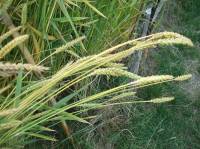
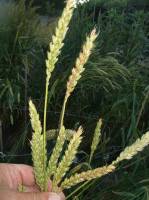
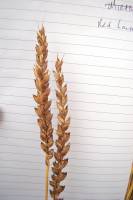
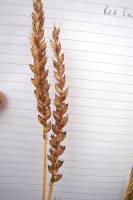
Old Kent Red link
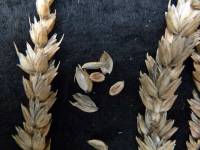
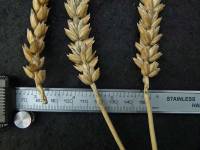

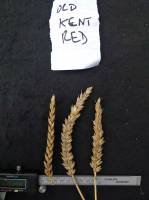
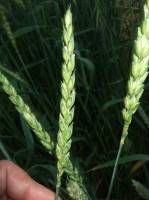
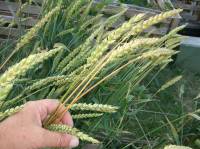
Old Burwell link
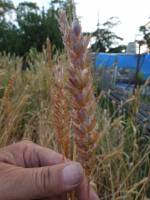
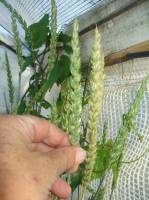
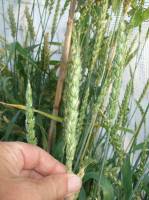
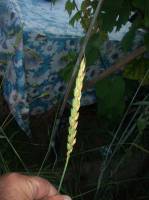
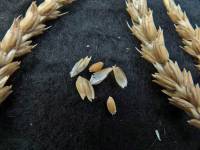
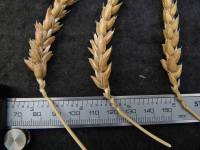
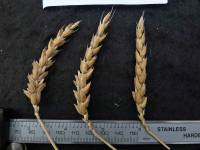

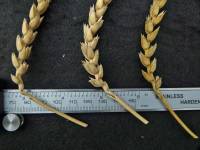
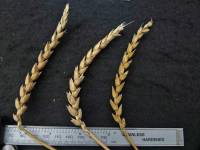
Michigan Amber link
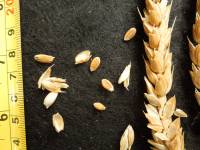
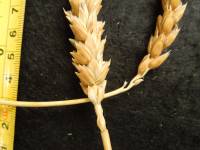
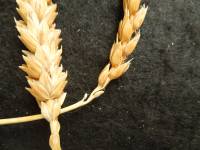
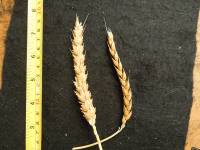

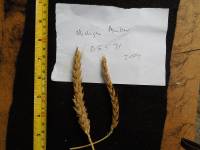
White Lammas link
